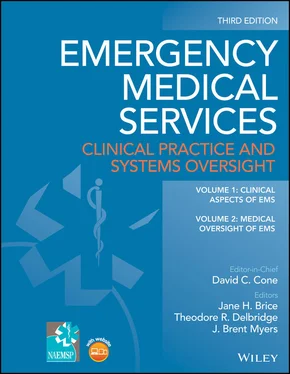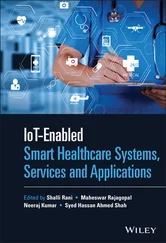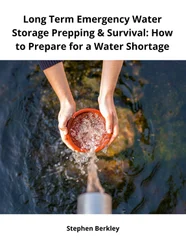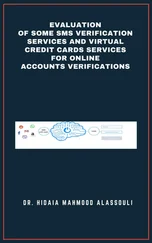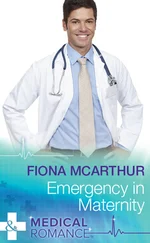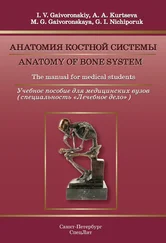26 Chapter 50Table 50.1 The clinical function scoreTable 50.2 The Lake Louise Symptom Score
27 Chapter 52Table 52.1 Organ systems affected by decompression illness
28 Chapter 53Table 53.1 Top three chief complaints by ageTable 53.2 Vital signs
29 Chapter 54Table 54.1 Pediatric medication dosesTable 54.2 Conditions that mimic seizuresTable 54.3 Definition of hypotension by systolic blood pressure and ageTable 54.4 Normal heart rate by age
30 Chapter 57Table 57.1 Common changes in normal agingTable 57.2 Six‐item screener for cognitive impairmentTable 57.3 The PHQ‐2
31 Chapter 58Table 58.1 Organic disorders with behavioral manifestationsTable 58.2 Factors that correlate with a higher risk for committing suicideTable 58.3 Measures for managing the potentially violent patientTable 58.4 Recommendations to Improve De‐escalationTable 58.5 Physical restraint procedureTable 58.6 Common medications to treat agitation
32 Chapter 59Table 59.1 BMI classificationTable 59.2 Dose considerations for common prehospital medications
33 Chapter 61Table 61.1 Symptoms and physical findings in sexual assault [13]
34 Chapter 63Table 63.1 Myth vs. reality of human traffickingTable 63.2 25 Work and living settings where human trafficking may be encount...Table 63.3 Environmental (scene) indicators of possible human traffickingTable 63.4 Individual (patient) indicators: chief complaint/history and physi...Table 63.5 Individual (patient) indicators: behavioral and psychosocialTable 63.6 Indicators associated with child sex traffickingTable 63.7 Interaction with persons who might be experiencing human trafficki...Table 63.8 EMS clinician and patient barriers to trafficking victim recogniti...
35 Chapter 68Table 68.1 FDA‐CLIA implications for EMS POC testingTable 68.2 POC key questionsTable 68.3 Considerations for POC in community paramedicine
36 Chapter 74Table 74.1 Personnel staffing modelsTable 74.2 Modes of transportationTable 74.3 Indications for interfacility transportation
37 Chapter 75Table 75.1 Sequential survival improvement in U.S. war experienceTable 75.2 2003‐2019 Summary of aircraft and coverage by stateTable 75.3 The Ground Air Medical Quality Transport Quality Improvement Colla...Table 75.4 Ad hoc operations
38 Chapter 76Table 76.1 Scope of practice vs standard of careTable 76.2 Cognitive material envisioned for each level of EMS licensureTable 76.3 Regulation of EMS personnelTable 76.4 Certification/licensureTable 76.5a National Registry of EMTs used for initial certification of EMS p...Table 76.5b National Registry of EMTs Used for Recertification of EMS Personn...
39 Chapter 77Table 77.1 Clinical syndromes or conditions warranting empiric transmission‐b...
40 Chapter 81Table 81.1 Trauma screening questionnaire
41 Chapter 82Table 82.1 CoAEMSP sponsoring organizationsTable 82.2 CAAHEP standards and guidelines for accreditationTable 82.3 CoAEMSP standards for responsibilities and qualifications of a med...
42 Chapter 86Table 86.1 Major categories of alleged negligence involving prehospital care ...
43 Chapter 88Table 88.1 Essential components of an emergency medical dispatch systemTable 88.2 Sample list of chief complaint and prearrival instruction protocol...
44 Chapter 89Table 89.1 Haddon’s matrix for emergency vehicle collisions
45 Chapter 91Table 91.1 Cost assumptionsTable 91.2 Deployment modelsTable 91.3 BreakevenTable 91.4 Optimistic, likely, and pessimistic production modelsTable 91.5 Reduced MIH visits (likely productivity)
46 Chapter 96Table 96.1 Mass gathering event descriptors and resource needs
47 Chapter 97Table 97.1 Example actions that an emergency support function may take in sup...Table 97.2 Key elements of crisis standards of care protocols
48 Chapter 101Table 101.1 Characteristics of standard medical transportation platforms in d...Table 101.2 Characteristics of nonmedical transportation platforms in disaste...Table 101.3 Military medical evacuation platforms and considerations for use ...Table 101.4 Military transportation platforms and considerations for use in d...
49 Chapter 105Table 105.1 EPA emergency action dose guidelinesTable 105.2 Signs and symptoms of radiation exposure
50 Chapter 106Table 106.1 Predicted damage radius based on the volume or weight of explosiv...
51 Chapter 108Table 108.1 Domains of technical rescue
52 Chapter 109Table 109.1 The Ten Essentials.
53 Chapter 110Table 110.1 Example Needs Assessment
54 Chapter 112Table 112.1 Deming’s 14 pointsTable 112.2 The National EMS Quality Measure Set
55 Chapter 113Table 113.1 Sample National EMS Quality Alliance quality measures.
56 Chapter 116Table 116.1 Central principles of the Belmont Report and application to resea...Table 116.2 Exception from informed consentTable 116.3 Waiver of informed consent and waiver of documentation of informe...
57 Chapter 117Table 117.1 Cohort characteristicsTable 117.2 Outcome measuresTable 117.3 Cerebral performance category score
58 Chapter 119Table 119.1 Commonly used age ranges for stratifying dataTable 119.2 Comparison of pediatric research priorities identified in existin...
59 Chapter 120Table 120.1 Forms of economic evaluationTable 120.2 EMS cost framework components (listed alphabetically)
60 Chapter 121Table 121.1 Definitions of terms commonly used in classical statistical testi...Table 121.2 Common statistical tests and their assumptionsTable 121.3 Probability of at least one type I (false‐positive) error when pe...
1 Chapter 1 Figure 1.1 The six guiding principles of EMS Agenda 2050 .
2 Chapter 2 Figure 2.1 Airway management algorithm. Source : Wang HE, Kupas DF, Greenwood...
3 Chapter 3 Figure 3.1 BVM ventilation Figure 3.2 Orotracheal intubation Figure 3.3 Manual in‐line stabilization for intubation of the patient with s... Figure 3.4 GlideScope TMvideo laryngoscope Figure 3.5 Corkscrew of endotracheal tube for digital intubation Figure 3.6 Gum elastic bougie threaded into an endotracheal tube. The bougie... Figure 3.7 i‐gel. Figure 3.8 LT airway. Figure 3.9 Laryngeal Mask Airway. Figure 3.10 Cricothyroidotomy. Figure 3.11 Esophageal detector device. Figure 3.12 Colorimetric carbon dioxide detector. Figure 3.13 Waveform carbon dioxide detector.
4 Chapter 4 Figure 4.1 Prone intubation. Figure 4.2 Left lateral decubitus intubating position. Figure 4.3 Kneeling intubation. Figure 4.4 Sitting intubation. Figure 4.5 Straddle intubation. Figure 4.6 Face‐to‐face “tomahawk” intubation position. Figure 4.7 Small continuous battery‐powered end‐tidal CO 2device. Figure 4.8 An example of a condensed airway pack with a laryngoscope roll (a...
5 Chapter 5 Figure 5.1 Normal capnographic waveform Figure 5.2 A capnogram depicting bronchospasm with a characteristic “shark f... Figure 5.3 Ultrasound image depicting B‐lines, which may be seen in ADHF and...
6 Chapter 6 Figure 6.1 Oxygen‐hemoglobin dissociation curve Figure 6.2 Capnography waveforms. (a) Normal waveform. Point A is beginning ... Figure 6.3 Bag‐valve mask device
7 Chapter 8 Figure 8.1 IV starting equipment. Figure 8.2 18‐ and 20‐gauge IV catheters with needles. Figure 8.3 Position of tourniquet proximal to target vein. Figure 8.4 “Flash” of blood indicating that needle is within the vein’s lume... Figure 8.5 External jugular vein. Figure 8.6 Intraosseous equipment. Figure 8.7 Central venous catheter kit.
8 Chapter 9 Figure 9.1 A prehospital 12‐lead ECG showing atrial fibrillation with a rapi...
9 Chapter 10 Figure 10.1 The classic one‐lead ECG appearance (lead II here) of torsades d...
10 Chapter 11 Figure 11.1 IABP arterial pressure tracings with 1:1 augmentation and 2:1 au... Figure 11.2 HeartMate II LVAD. LVAS, left ventricular assist system. Figure 11.3 Emergency assessment of a patient with an LVAD. Figure 11.4 The first ECG depicts failure of electrical capture with pacer s...
Читать дальше
